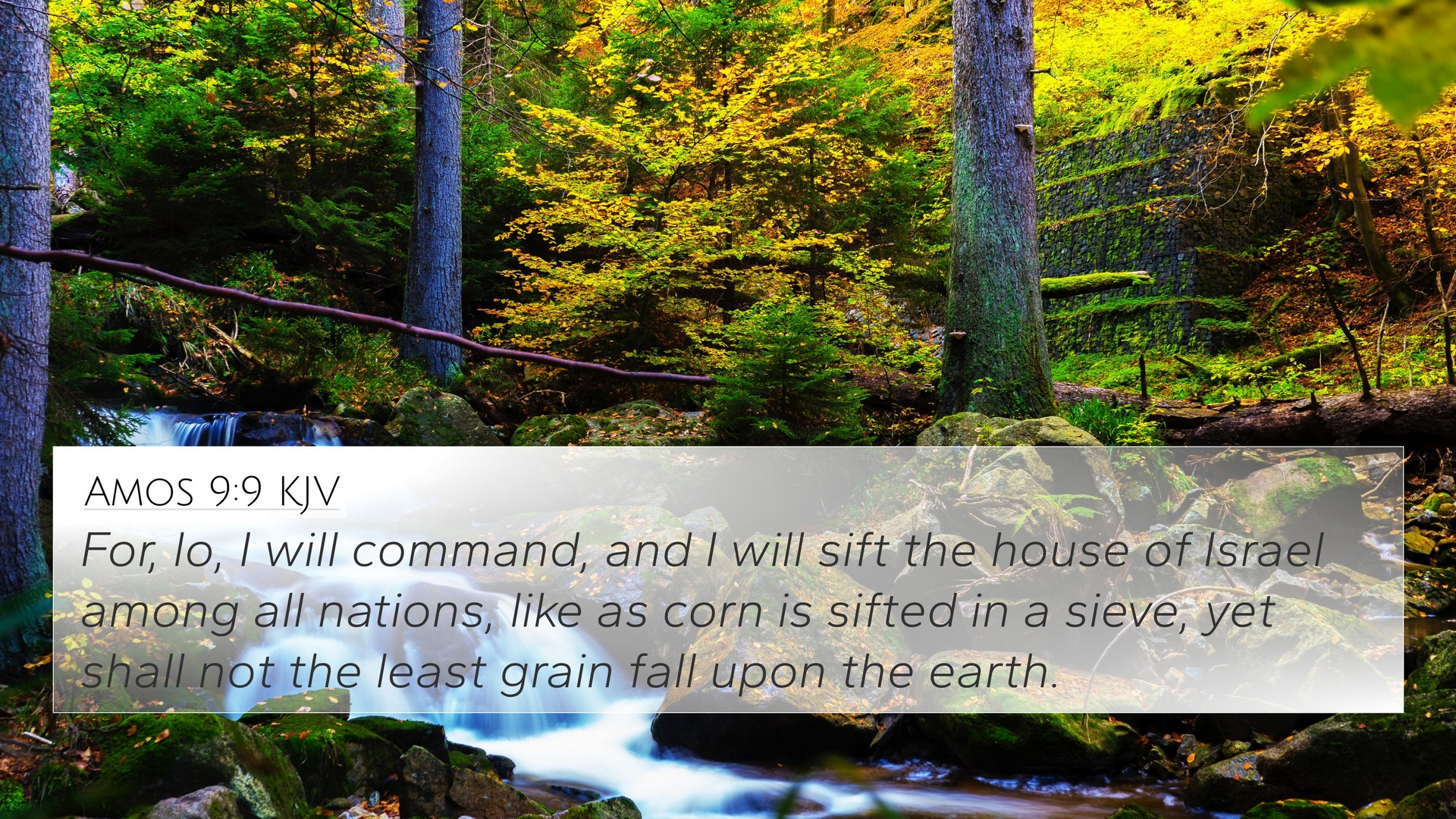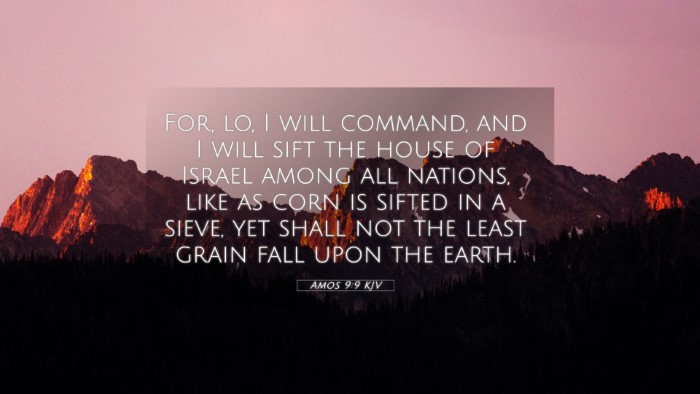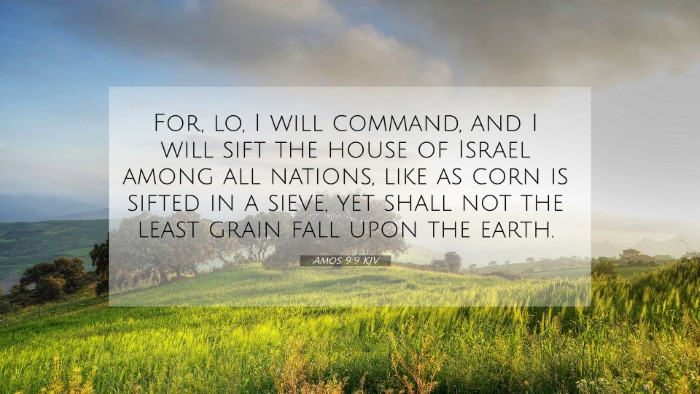Old Testament
Genesis Exodus Leviticus Numbers Deuteronomy Joshua Judges Ruth 1 Samuel 2 Samuel 1 Kings 2 Kings 1 Chronicles 2 Chronicles Ezra Nehemiah Esther Job Psalms Proverbs Ecclesiastes Song of Solomon Isaiah Jeremiah Lamentations Ezekiel Daniel Hosea Joel Amos Obadiah Jonah Micah Nahum Habakkuk Zephaniah Haggai Zechariah MalachiAmos 9:9 Similar Verses
Amos 9:9 Cross References
For, lo, I will command, and I will sift the house of Israel among all nations, like as corn is sifted in a sieve, yet shall not the least grain fall upon the earth.
Uncover the Rich Themes and Topics of This Bible Verse
Listed below are the Bible themes associated with Amos 9:9. We invite you to explore each theme to gain deeper insights into the Scriptures.
Amos 9:9 Cross Reference Verses
This section features a detailed cross-reference designed to enrich your understanding of the Scriptures. Below, you will find carefully selected verses that echo the themes and teachings related to Amos 9:9 KJV. Click on any image to explore detailed analyses of related Bible verses and uncover deeper theological insights.
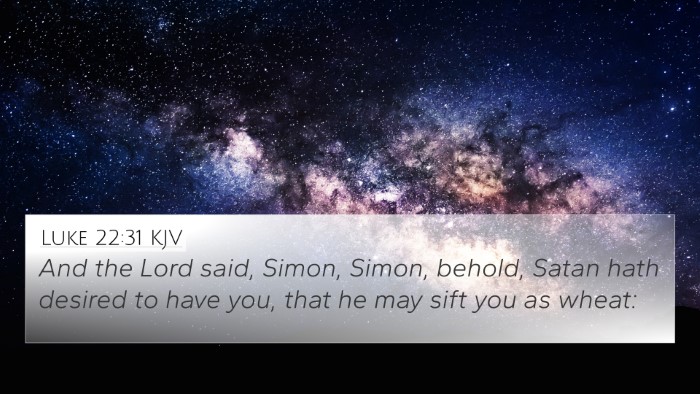
Luke 22:31 (KJV) »
And the Lord said, Simon, Simon, behold, Satan hath desired to have you, that he may sift you as wheat:
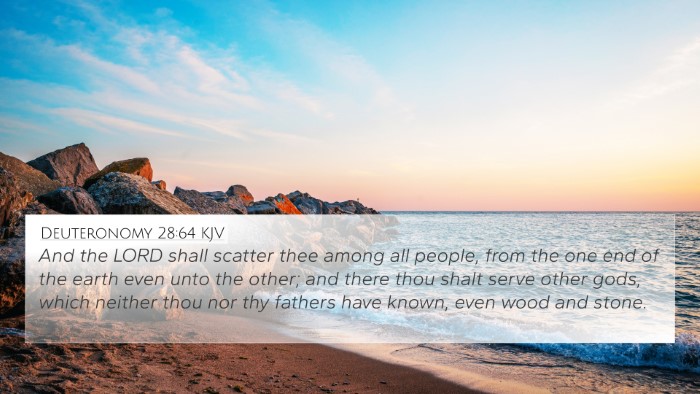
Deuteronomy 28:64 (KJV) »
And the LORD shall scatter thee among all people, from the one end of the earth even unto the other; and there thou shalt serve other gods, which neither thou nor thy fathers have known, even wood and stone.

Leviticus 26:33 (KJV) »
And I will scatter you among the heathen, and will draw out a sword after you: and your land shall be desolate, and your cities waste.

Isaiah 30:28 (KJV) »
And his breath, as an overflowing stream, shall reach to the midst of the neck, to sift the nations with the sieve of vanity: and there shall be a bridle in the jaws of the people, causing them to err.
Amos 9:9 Verse Analysis and Similar Verses
Understanding Amos 9:9
Amos 9:9 states: "For, behold, I will command, and I will sift the house of Israel among all nations, like as corn is sifted in a sieve, yet shall not the least grain fall upon the earth." This verse is a profound declaration of God's sovereign judgment and His ultimate preservation of His people. The imagery used here, reminiscent of an agricultural process, emphasizes both the separation of the righteous from the wicked and God's careful oversight in preserving the true descendants of Israel.
Verse Meaning and Interpretation
The insights from various public domain commentaries illuminate the layers of meaning behind Amos 9:9:
-
Matthew Henry:
Henry emphasizes the idea of God’s active role in "sifting" His people, akin to separating chaff from wheat. He interprets this sifting as a divine process of judgment, where the faithful are preserved while the unfaithful are purged. In this way, it assures the true Israelites that despite their impending trials among the nations, God remains in control and intends to save a remnant.
-
Albert Barnes:
Barnes notes that the sifting likens God’s judgment to agricultural processes, which would have resonated with an agrarian society. He points out that while they will be scattered, they will not be lost. The "least grain" symbolizes that none of the true believers will perish. His interpretation underscores God’s promise to maintain His covenant with Israel despite their unfaithfulness.
-
Adam Clarke:
Clarke elaborates that this sifting represents God’s meticulous care in preserving His true people. He indicates that this process is both a punishment and a purification, ultimately related to themes of grace and redemption. Clarke emphasizes hope within judgment, as the remnant will be restored and established after the sifting is completed.
Cross-References Related to Amos 9:9
There are several key Bible verses that resonate with the themes found in Amos 9:9:
- Isaiah 10:20-22: Discusses a remnant of Israel returning to God after judgment.
- Jeremiah 23:3: Addresses God gathering the scattered flock of His people.
- Ezekiel 11:16: Highlights God's promise to be a sanctuary for the exiled Israelites.
- Matthew 3:12: Uses similar imagery of winnowing as part of God's judgment.
- Luke 22:31-32: Reflects on Jesus’ assurance to Peter about being sifted but ultimately being preserved.
- John 10:28: Declares that none of Jesus’ sheep will be lost, echoing the protective theme of Amos.
- Romans 11:5: Mentions a remnant of grace being preserved amidst a larger apostasy.
Connecting the Themes of Sifting and Preservation
The theme of sifting in Amos 9:9 connects deeply with the overarching narrative of divine judgment and mercy found throughout Scripture. These relationships create a rich tapestry of understanding regarding God's dealings with humanity.
Exploring Thematic Connections
- Judgment and Restoration: Many prophets echo the dual themes of sin, judgment, and eventual restoration, clarifying God's character as just and merciful.
- The Concept of the Remnant: Amos’ declaration of preserving a remnant is a theme found in other prophets which informs the New Testament understanding of salvation.
- The Role of Faithful Leaders: These verses often hint at the necessity for leaders who guide their people back to faithfulness amidst turmoil.
Conclusion
Amos 9:9 serves as a powerful reminder of God's sovereignty in judgment and his faithfulness to His people. By studying this verse in the light of various commentaries and cross-references, we gain a deeper appreciation for the continuity of God's plan throughout both Testaments. The themes found in this verse speak not only to the time of Israel but resonate with believers today who seek to understand their place in God's ongoing story.
Tools for Bible Cross-Referencing
Engaging with cross-references can deepen one’s understanding of the Bible. Here are some recommended methods:
- Bible Concordance: A valuable tool for locating similar themes and specific verses.
- Cross-Reference Bible Study: Collecting themes and verses that relate can guide deeper discussions and studies.
- How to Use Bible Cross-References: Understanding the context of related verses amplifies interpretation.
